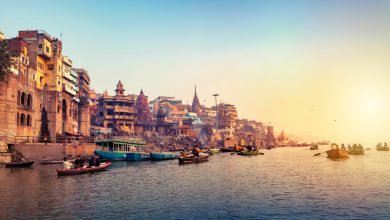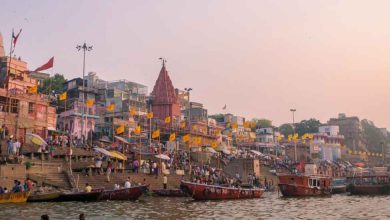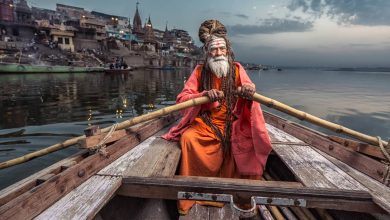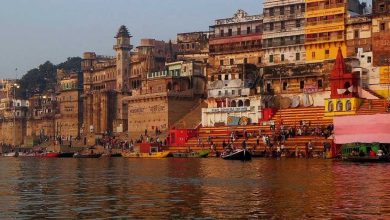While exploring the wonders of the world as travellers, you may come across certain places that not only have a lasting impression on your core memory but also have the power to transform your perception of life. One such place to visit in India is Varanasi, one of the oldest continuously inhabited cities in the world and the spiritual capital of India. Located in Uttar Pradesh on the banks of the holy Ganga River, it is home to Shree Kashi Vishwanath Temple, one of the famous temples in India, along with various other sacred temples and ghats.
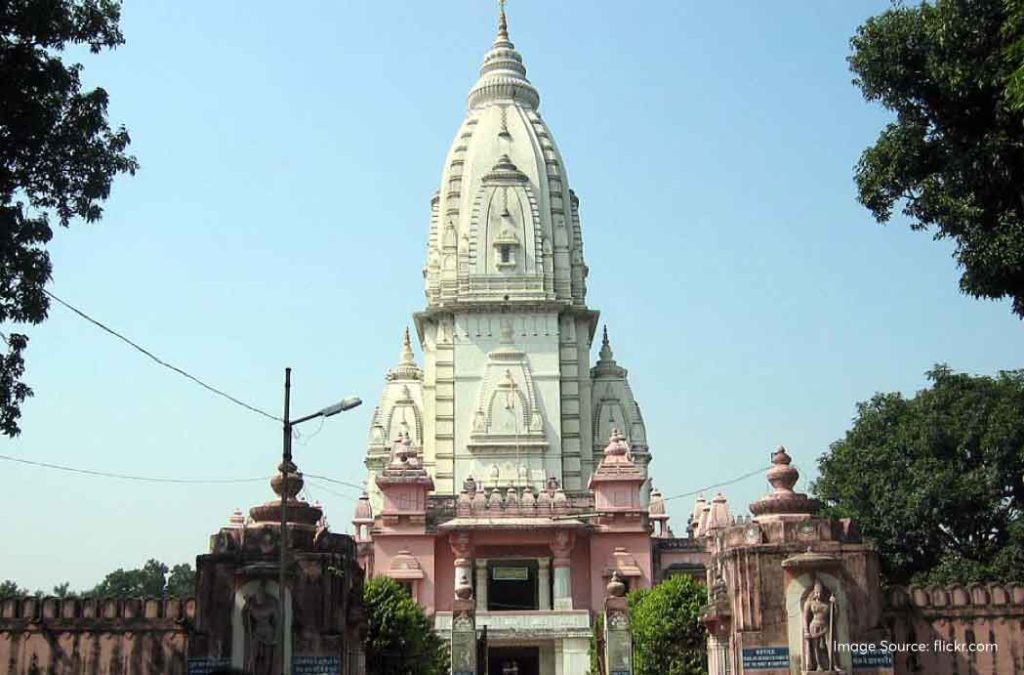
In this post, we will dive into the divine and mystic world of Varanasi, especially the Kashi Vishwanath Temple, one of the richest temples in India. From modes of transportation, the best time to visit, to the historic and mythological significance of the temple, customs and festivals, we will explore everything you need to know before planning your trip.
Shree Kashi Vishwanath Temple: A Journey Beyond Time!
Built in the 18th century, it is one of the 12 Jyotirlinga shrines in India. The presiding deity of the temple is known as Vishwanath and Vishweshwara (Lord of the Universe). The temple is one of the most visited Shiva temples in India as it is believed to grant liberation from the cycle of birth and death.
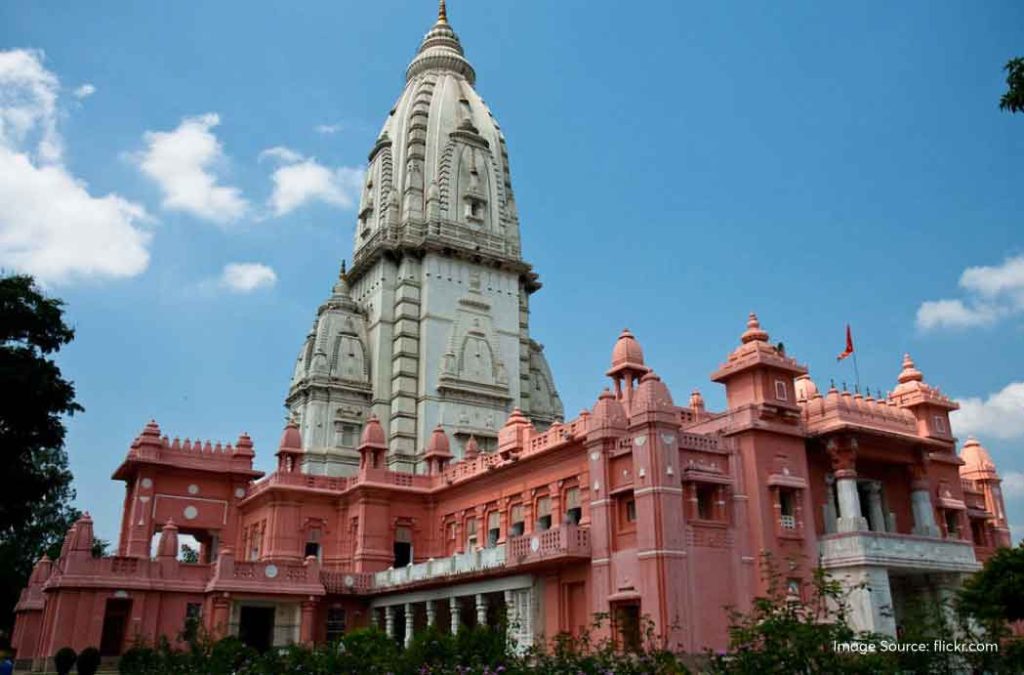
To visit the temple complex, you have to make your way through a maze of narrow lanes and alleys of Vishwanath Gali in Varanasi. Shree Kashi Vishwanath Temple, also known as the Golden Temple, has a rich and fascinating history beyond time and measure.
The original temple, the Adi Vishveshwar Temple, was built by King Vikramaditya. The temple faced multiple invasions and destruction since 1194, when it was first demolished on the orders of Qutb-ud-din Aibak, a Turkic general of the Ghurid emperor Muhammad Ghori. Despite the attacks, the devotees continued visiting the remnants of the temple and the complex was built multiple times throughout history.
The present temple was constructed in 1780, on the adjacent site by the Maratha ruler Ahilyabai Holkar of Indore. The unique architecture of the temple is a blend of Hindu and Islamic styles. It has a gold-plated dome and two gold spires, donated by the Maharaja Ranjit Singh of Punjab. The temple also has a small well called the Jnana Vapi or Gyan Vapi (the wisdom well) and a spacious courtyard, the sabha mandap, where all the religious ceremonies and rituals take place.
To boost the temple’s rich historic and cultural heritage and offer ease of commuting to the visitors, the Kashi Vishwanath Dha Corridor was inaugurated but the Prime Minister Narendra Modi in 2021. The corridor connects the temple with the Ganga River, offering visitors improved facilities and easy navigation of key landmarks around the temple.
Mythological Significance of Kashi Vishwanath Temple
According to the legends, the first ray of the sun fell on Kashi when the earth was founded. There are multiple other interesting stories associated with the Kashi Vishwanath Temple, including:
- Kashi Vishwanath Jyotirlinga: The Temple is one of the 12 Jyotirlinga in India, the most sacred abode of Lord Shiva. It is believed that worshipping the Jyotirlinga helps devotees attain liberation (Moksha).
- Kashi Vishwanath Shaktipeeth: Along with being a jyotirlinga, it is also one of the Shaktipeeth. It is believed that the temple was constructed where Goddess Sati’s ear fell during the Tandav performed by Lord Shiva in sorrow after her self-sacrifice. This is also considered the same place where Lord Shiva married Goddess Parvati, his second wife after Sati.
- Reference in Ramayana: The Kashi Vishwanath Temple finds its reference in the epic Ramayana. According to it, Lord Ram is said to have visited Kashi during his exile to worship Lord Shiva at the temple. Lord Ram sought his blessings before embarking on his journey to rescue his wife, Goddess Sita, from the demon King of Lanka, Ravan.
Kashi Vishwanath Temple Darshan Timings
The temple is open for devotees from 3:00 AM to 11:00 PM every day, except from 7:00 PM to 8:30 PM for Saptrishi aarti. In case you wish to witness the rituals and attend aartis, here is a detailed description of the Kashi Vishwanath Temple Darshan Timings:
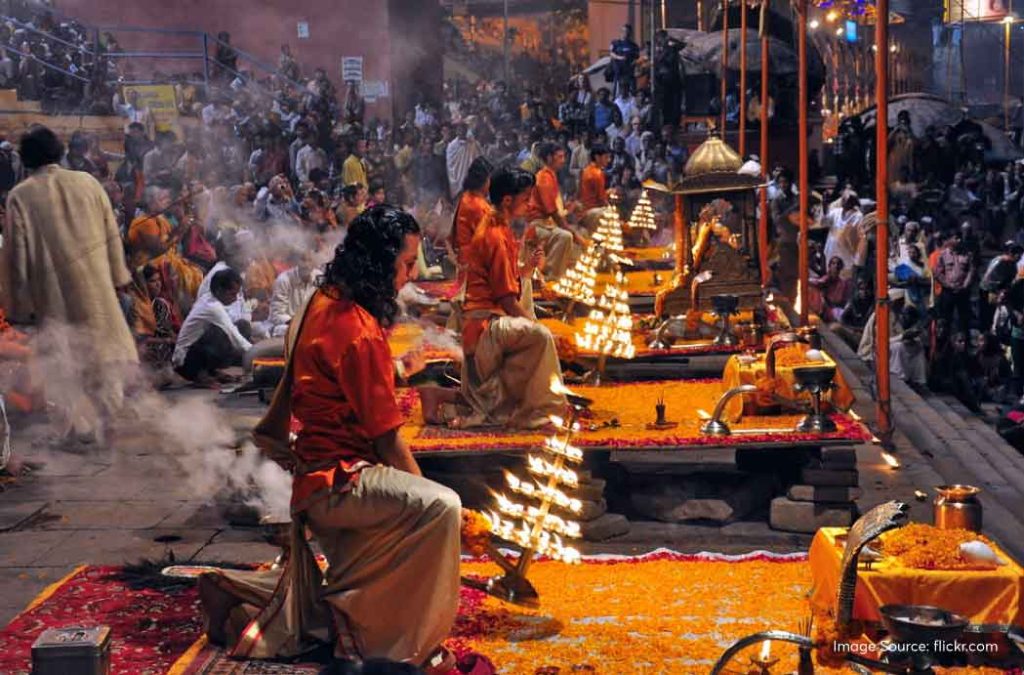
- Mangala Aarti- 3:00 AM to 4:00 AM
- Bhog Aarti- 11:15 AM to 12:20 PM
- Saptirishi Aarti – 7:00 PM to 8:30 PM
- Night Shringar/Bhog Aarti – 9:00 PM to 10:15 PM
- Night Shayan Aarti – 10:30 PM to 11:00 PM
How to Reach Kashi Vishwanath Temple?
Varanasi, also known as Kashi or Banaras, has excellent connectivity through roads, rails and air. There are numerous hotels in Varanasi, offering private cab facilities from airports, railway stations and bus stands, which you can request while booking your stay.
By Air
The nearest airport to Varanasi is Lal Bahadur Shastri International Airport, located 22 kms away from the city. You can take a direct flight from New Delhi or a connecting flight from major cities like Agra, Khajuraho, Kolkata, Mumbai, New Delhi, Bhubaneswar and Lucknow. From the airport, you can take a taxi to reach Varanasi.
By Train
Varanasi is a major rail junction and is well-connected to major cities across the country. Varanasi City Railway Station, located just 2 kms, is the nearest railway station to the temple. You can also take a train to Manduadih Railway Station at 4 kms and Varanasi Junction, located 6 kms away from the temple.
By Road
Varanasi is situated on NH2 from Kolkata to Delhi, connecting it to the major cities. UPSRTC, private operators, RSRTC and MSRTC run regular buses from Patna, Delhi, Lucknow and other cities to Varanasi.
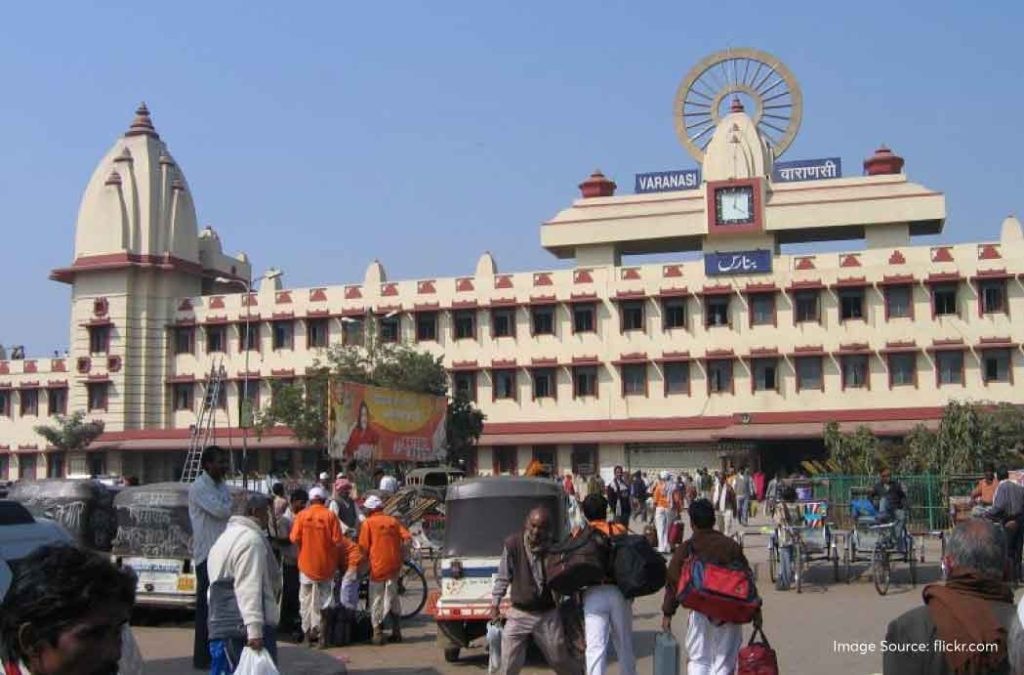
As the Kashi Vishwanath Temple is located in Vishwanath Gali, a narrow lane, you can only reach it on foot, by tuk-tuk or cycle rickshaw. The best way to travel hassle-free is to book your accommodation at hotels near Kashi Vishwanath Temple, Varanasi and enjoy a relaxing stay after a long journey.
Best Time to Visit Kashi Vishwanath Temple
The best time to visit Kashi Vishwanath Temple is between November and February, as the weather is pleasant than the rest of the year. The summers in Varanasi are extremely hot, and monsoon is accompanied by heavy rainfall, making it difficult to visit temples or for sightseeing. Also, these months are ideal to witness the festivities and celebrations in the temple. Maha Shivratri (February), Chhath Puja (October/November) and Ganga Mahotsav, a five-day festival (November/December), are celebrated during these months with great enthusiasm.
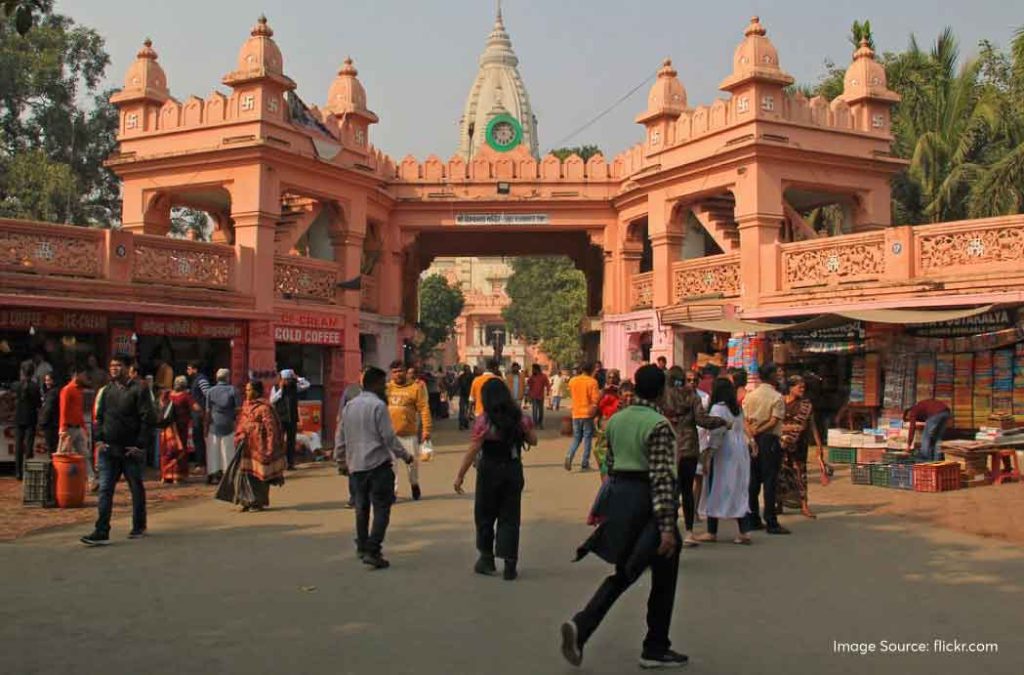
However, you can get Kashi Vishwanath Temple Darshan during the rest of the months, when the city is less crowded with visitors and the hotels in Varanasi offer cheaper stays due to the off-season. You can visit the temples and ghats early in the morning or late evening.
Must-Visit Places Near Kashi Vishwanath Temple
The Kashi Vishwanath Temple is surrounded by various other sacred temples and ghats, each holding their significance for the devotees. So, while visiting the Kashi Vishwanath Jyotirlinga, you can also explore the following places to visit in Varanasi:
Shree Kaal Bhairav Temple
It is believed that your pilgrimage journey to the Vishwanath temple is incomplete until you visit Kaal Bhairav Temple, one of the oldest temples in Varanasi. Also known as Batuk Bhairav Mandir, it is located at a short distance from the main temple and the ghats.
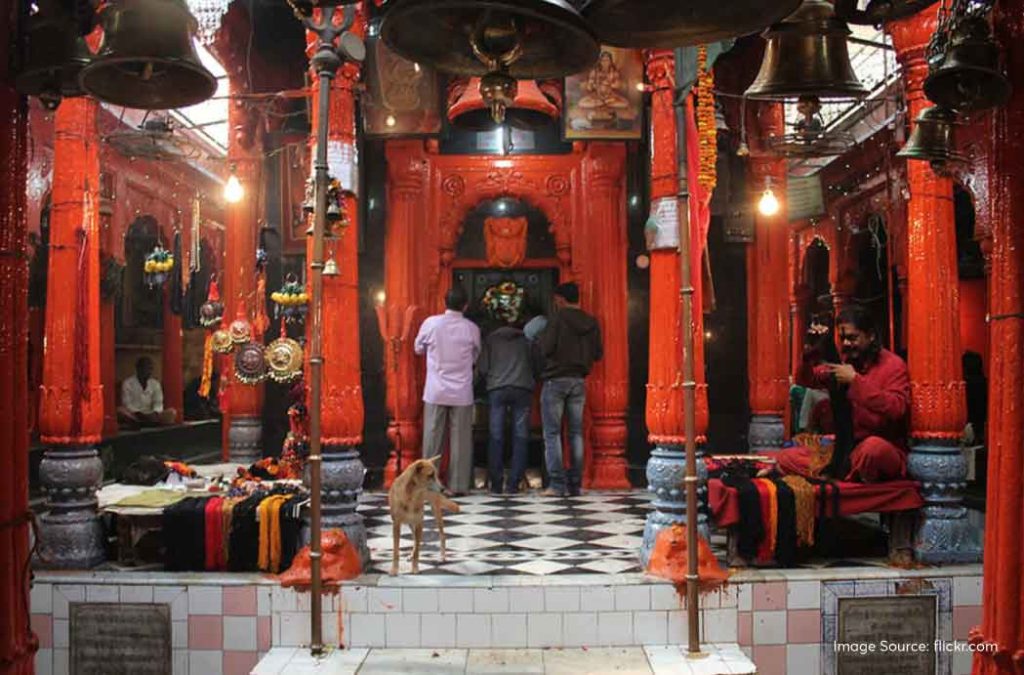
According to the legends, the Batuk Bhairav is the protector of the people of the city, attracting many locals and tourists to seek his blessings.
Manikarnika Ghat
One of the most significant ghats and holiest cremation grounds in India, Manikarnika Ghat is located on the banks of the Ganga River. It is believed that Goddess Sati dropped her earring, called “Manikarnika,” in the same place, hence it is named after it. The ghat is a symbol of the circle of life and death, where cremation takes place around the clock.

It is believed that the person who is cremated here becomes free of the cycle of life and death and attains Moksha.
Dashashwamedh Ghat
Known for its vibrant and lively atmosphere with daily rituals, aarti ceremonies and religious processions, Dashashwamedh Ghat is one of the oldest ghats of Varanasi. According to Hindu mythology, the ghat holds immense religious and cultural significance for being the place where Lord Brahma is believed to have performed the Dashashwamedh Ghat Yajna.
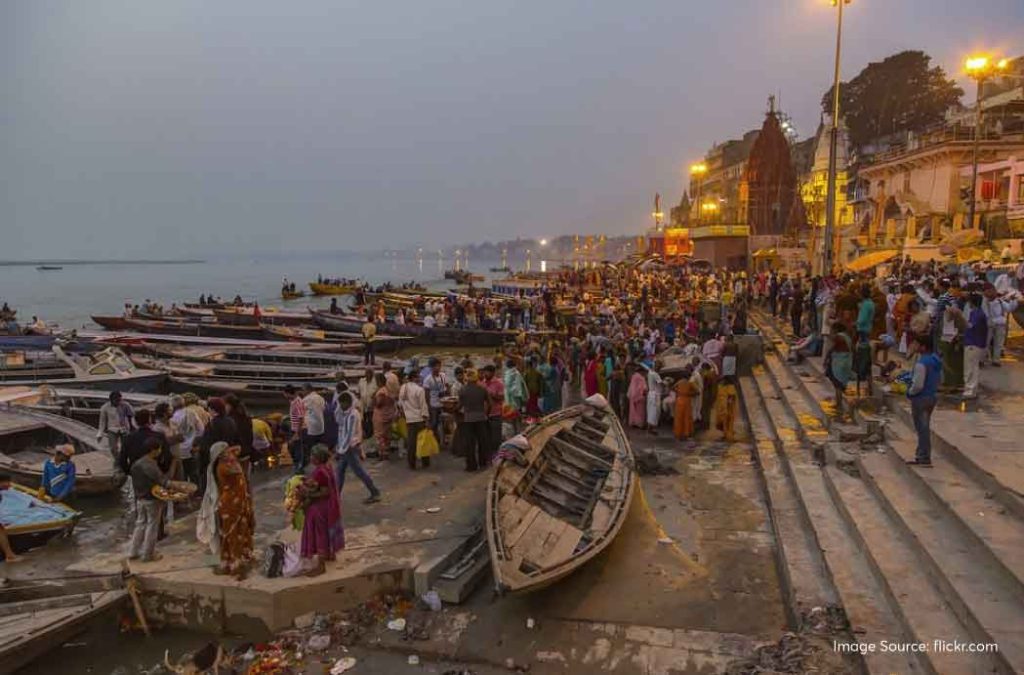
The ghat is also a popular tourist attraction, which attracts visitors to take boat rides, witness sacred rituals and immerse themselves in the spirituality of the city.
Now that you have read everything, you need to know the Kashi Vishwanath Temple. Start planning your journey to the mystic city of Varanasi to witness the spiritual aura and experience the divine energies.
For booking your stay, you can visit Treebo Club’s website or app to find budget-friendly hotels near Kashi Vishwanath Temple Varanasi. These hotels offer easy access to the main temple and nearby tourist attractions for your seamless and memorable trip.
